March 2, 2015
Fairfield Wellness and Physical Therapy
dehydration, fat, sick, water
360 Fitness Performance Sports, 360 Fitness Sports Performance, A.R.T., active release technique, acupuncture, alkalinity, allergies, ART, athlete, best of essex, biofreeze, blueberries, caldwell, Caldwell Street Fair, Chiropractic, cholesterol, DC, decompression, detox, Dr. Cox, Dr. Sean McLaughlin, electrical muscle stimulation, ergonomics, essex county, exercise, Fairfield, Fairfield Wellness and Physical Therapy, faisal mahmood, faisal mahmood md, FFWPT, FItness, food, foods, Garrick Cox, Gluten, graston, graston technique, gym, gym membership, hCG, hCG Diet, health tips, healthcare, healthy eating, Jim Bonardi, joe droz, john fiore, Juicing, kinesio tape, kinesio taping, Larry Heisler, laser therapy, M.D., massage, massage discounts, MD, morgan reade, Muscle, New Jersey Massage, NJ, nj advanced acupuncture, nutrition, nutrition counseling, oils, orthopedic, orthopedic surgeon, pain management, pain reliever, parisi, parisi speed school, performance, pH, physiatrist, physical therapy, posture, pre-registration, premier, PT, rob masella, rob masella md, Sean McLaughlin, SINUS, spinal decompression, Sports, suburban essex, test, thomas agesen, tom agesen, ultrasound, veggies, water, Weight Loss, wellness, wellness center, West Essex, West Essex 5k Run, West Essex High School, www.ffwpt.wordpress.com, www.NJ360Fitness.com
The Dirty Dozen: 12 Foods You Should Always Buy Organic
The Environmental Working Group released its 2015 report on pesticide residue in fruits and vegetables on Wednesday.
February 25, 2015
By Willy Blackmore
Willy Blackmore is TakePart’s Food editor.
When it comes to buying fruit, comparing organic with conventionally grown options can be like apples and oranges—even when all you’re trying to buy is apples.
A pound of apples costs roughly between $1 and $1.50, according to the most recent data from the USDA. If you want to go organic, you’ll pay about $1 more per pound.
You could make a case for the apples being worth more, however, because you’re buying a not insignificant amount of pesticides with that fruit, according to analysis of government data by the Environmental Working Group. In the latest iteration of the Dirty Dozen, released Wednesday, apples once again topped the list of the 12 fruits and vegetables (well, 14, really) that retain the highest amount of pesticides and other toxic agricultural chemicals.
According to the accompanying report, two-thirds of the more than 3,000 produce samples analyzed by the USDA tested positive for pesticide residue. A study published earlier this month by the journal Environmental Health Perspectives found that eating organic reduced people’s exposure to pesticides—but that even sticking to an all-organic diet could still result in some pesticide intake. Chemicals used in agriculture can have severe health effects on agricultural workers, and there are concerns that low-level, long-term exposure could contribute to the development of chronic diseases such as cancer and autism.
So if you’re a budget-conscious shopper—and who isn’t, really?—but aren’t looking for a good deal on some value-added pesticides, that extra dollar per pound for apples is well spent. The same goes for peaches, nectarines, strawberries. and grapes, which round out the top five. And the consumer-friendly guide will show you where to make up for your more expensive organic purchases with the Clean Fifteen, a list of those items that bear the least amount of residue. Avocados, which top the less toxic list, are nearly pesticide-free even when conventionally grown; just 1 percent of the fruit sampled showed remnants of farming chemicals.
“We are saying, eat your fruits and vegetables,” Sonya Lunder, EWG’s senior analyst, said in a statement. “But know which ones have the highest amounts of pesticides so you can opt for the organic versions, if available and affordable, or grab a snack off the Clean Fifteen.”
Dirty Dozen
Apples
Peaches
Nectarines
Strawberries
Grapes
Celery
Spinach
Sweet bell peppers
Cucumbers
Cherry tomatoes
Snap peas (imported)
Potatoes
Hot peppers
Kale and collard greens
Clean Fifteen
Avocados
Sweet corn
Pineapples
Cabbage
Sweet peas (frozen)
Onions
Asparagus
Mangos
Papayas
Kiwi
Eggplant
Grapefruit
Cantaloupe
Cauliflower
Sweet potatoes
February 5, 2015
Fairfield Wellness and Physical Therapy
dehydration, fat, sick, water
360 Fitness Performance Sports, 360 Fitness Sports Performance, A.R.T., active release technique, acupuncture, alkalinity, allergies, ART, athlete, best of essex, biofreeze, blueberries, caldwell, Caldwell Street Fair, Chiropractic, cholesterol, DC, decompression, detox, Dr. Cox, Dr. Sean McLaughlin, electrical muscle stimulation, ergonomics, essex county, exercise, Fairfield, Fairfield Wellness and Physical Therapy, faisal mahmood, faisal mahmood md, FFWPT, FItness, food, foods, Garrick Cox, Gluten, graston, graston technique, gym, gym membership, hCG, hCG Diet, health tips, healthcare, healthy eating, Jim Bonardi, john fiore, Juicing, kinesio tape, kinesio taping, Larry Heisler, laser therapy, M.D., massage, massage discounts, MD, morgan reade, Muscle, New Jersey Massage, NJ, nj advanced acupuncture, nutrition, nutrition counseling, oils, orthopedic, orthopedic surgeon, pain management, pain reliever, parisi, performance, pH, physiatrist, physical therapy, posture, pre-registration, premier, PT, rob masella, rob masella md, Sean McLaughlin, SINUS, spinal decompression, Sports, suburban essex, test, thomas agesen, tom agesen, ultrasound, veggies, water, Weight Loss, wellness, wellness center, West Essex, West Essex 5k Run, West Essex High School, www.ffwpt.wordpress.com, www.NJ360Fitness.com
Why Dehydration Is Making You Fat And Sick
Digestive, skin, bladder and kidney problems, fatigue and headache are just some of the adverse effects from not drinking enough water. We need it as much as air we breathe in! It’s not a joke.
Did you know that when you start feeling thristy your body is already dehydrated? The best practice is to sip water throughout a day. Have it always handy!
If you’re not a morning person, have two glasses of water right after you wake up. It will boost up your blood pressure to normal levels, and it’s way healthier than having your first coffee on an empty stomach.
Also, don’t think that sweetened juices, soda or tea will hydrate you as well as water does. It’s actually the opposite! Sugar, as well as salt, makes your body waste precious water just to clean it out from your system. And if you love your coffee, make sure to drink one extra glass of water for every cup you have.
And as an added bonus, drinking water speeds up your metabolism and makes you feel more ‘full’. You will eat less once you start drinking more! It’s the safest and healthiest way to loose some weight.

Source: Rsvlts via Memolition
– See more at: http://www.thinkinghumanity.com/2014/05/why-dehydration-is-making-you-fat-and-sick.html?m=1#sthash.tlx8QO0v.dpuf
November 12, 2014
Fairfield Wellness and Physical Therapy
Uncategorized
360 Fitness Performance Sports, 360 Fitness Sports Performance, A.R.T., active release technique, acupuncture, alkalinity, allergies, ART, athlete, best of essex, biofreeze, blueberries, caldwell, Caldwell Street Fair, Chiropractic, cholesterol, DC, decompression, detox, Dr. Cox, Dr. Sean McLaughlin, electrical muscle stimulation, ergonomics, essex county, exercise, Fairfield, Fairfield Wellness and Physical Therapy, faisal mahmood, faisal mahmood md, FFWPT, FItness, food, foods, Garrick Cox, Gluten, graston, graston technique, gym, gym membership, hCG, hCG Diet, health tips, healthcare, healthy eating, Jim Bonardi, joe droz, john fiore, Juicing, kinesio tape, kinesio taping, Larry Heisler, laser therapy, M.D., massage, massage discounts, MD, morgan reade, Muscle, New Jersey Massage, NJ, nj advanced acupuncture, nutrition, nutrition counseling, oils, orthopedic, orthopedic surgeon, pain management, pain reliever, parisi, parisi speed school, performance, pH, physiatrist, physical therapy, posture, pre-registration, premier, PT, rob masella, rob masella md, Sean McLaughlin, SINUS, spinal decompression, Sports, suburban essex, test, thomas agesen, tom agesen, ultrasound, veggies, water, Weight Loss, wellness, wellness center, West Essex, West Essex 5k Run, West Essex High School, www.ffwpt.wordpress.com, www.NJ360Fitness.com

According to research recently conducted at Emory University in Atlanta, adherence to the Paleo Diet may significantly slash colorectal cancer rates.1 For their study, published online last month in the American Journal of Epidemiology, researchers examined the dietary habits of 2,301 men and women, 30 to 74 years old. Participants were categorized based on how closely their diets resembled the Paleo Diet. Overall, 564 participants developed colorectal adenoma, a benign tumor of the colon or rectum. Scientists classify colorectal adenoma as a precursor to colorectal cancer.2 For women with diets most closely resembling the Paleo Diet, tumor rates fell 29 percent compared to control groups. For men, Paleo Diet benefits were even more pronounced, with tumor rates falling 51 percent.
For those who study and follow the Paleo lifestyle, these results are hardly surprising. As the Paleo Diet becomes increasingly popular, however, it’s also more frequently misrepresented. Just last week, for example, Janet Helm of US News & World Report wrote about Paleo, “I don’t support this restrictive, meat-heavy diet that bans so many nutritious foods, such as dairy, grains and beans.”3 The Paleo Diet, of course, includes healthy animal foods, but disparagingly calling it “meat-heavy,” ignores the fact that it’s very vegetable-heavy. Could the Paleo Diet’s high vegetable level explain its protective effects against colorectal cancer?
Vegetables, of course, contain fiber and Western diets contain far less fiber than those of our Paleolithic ancestors. Whereas mean daily fiber intakes in the US range from 10 to 18 grams, our Paleolithic ancestors consumed upwards of 100 grams daily.4, 5 Some 40 years ago, an Irish surgeon named Denis Burkitt introduced the theory that increased consumption of dietary fiber decreases colorectal cancer risks.6 Burkitt’s theory gained traction and was eventually accepted as common knowledge, but a number of cohort studies and randomized controlled trials in recent decades have strongly challenged his contention.7 Although many prominent institutions, including the Harvard School of Public Health, no longer accept Burkitt’s theory, it may be premature to conclude that fiber consumption and colorectal cancer are unrelated.8
In an article published in the European Journal of Clinical Nutrition, anthropologist Jeff Leach points out that fiber levels in studies challenging Burkitt’s theory, even for participants in the uppermost quintiles, are still far below evolutionary standards.9 We should also acknowledge fiber’s beneficial effects with respect to gut microbiome health. Increased fiber consumption promotes decreased intestinal inflammation, decreased body weight, and decreased obesity-induced chronic inflammation.10 While the causes of colorectal cancer are not entirely known, the Mayo Clinic lists inflammatory intestinal conditions, insulin resistance, obesity, smoking, heavy alcohol consumption, and sedentary lifestyle all as factors that may increase colorectal cancer risks.11
So what does this new research associating the Paleo Diet with decreased colorectal cancer really tell us? Does the Paleo Diet’s vegetable-heavy, and thus fiber-heavy, aspect account for this benefit? We cannot say so definitively. We can say, however, that the Paleo Diet is more than just a diet. It’s a lifestyle that promotes wellness and prevents disease. Most diseases, especially cancer, have multiple roots, the combination of which eventually grows into disease. This recent research is a testament to the holistic nature of the Paleo Diet and Paleo lifestyle, encompassing many informed decisions, which likely collectively protect against colorectal cancer.
Christopher James Clark, B.B.A.
Christopher James Clark, B.B.A. is an award-winning writer, consultant, and chef with specialized knowledge in nutritional science and healing cuisine. He has a Business Administration degree from the University of Michigan and formerly worked as a revenue management analyst for a Fortune 100 company. For the past decade-plus, he has been designing menus, recipes, and food concepts for restaurants and spas, coaching private clients, teaching cooking workshops worldwide, and managing the kitchen for a renowned Greek yoga resort. Clark is the author of the critically acclaimed, award-winning book, Nutritional Grail.
REFERENCES
1 Whalen, K., et al. (2014). Paleolithic and Mediterranean Diet Pattern Scores and Risk of Incident, Sporadic Colorectal Adenomas. American Journal of Epidemiology. Retrieved from http://aje.oxfordjournals.org/content/early/2014/10/17/aje.kwu235.abstract
2 Srivastava, S., et al. (May 2001). Biomarkers for early detection of colon cancer. Clinical Cancer Research, 7(5). Retrieved from http://www.ncbi.nlm.nih.gov/pubmed/11350874
3 Helm, Janet. (November 5, 2014). 8 Positive Outcomes of the Paleo Trend. US News & World Report. Retrieved from https://www.yahoo.com/health/8-positive-outcomes-of-the-paleo-trend-101439975577.html
4 Clemens, R., et al. (July 2012). Filling America’s Fiber Intake Gap: Summary of a Roundtable to Probe Realistic Solutions with a Focus on Grain-Based Foods. Journal of Nutrition, 142(7). Retrieved from http://www.ncbi.nlm.nih.gov/pubmed/22649260
5 Leach, JD. (January 2007). Evolutionary perspective on dietary intake of fibre and colorectal cancer. European Journal of Clinical Nutrition, 61(1). Retrieved from Evolutionary perspective on dietary intake of fibre and colorectal cancer
6 Burkitt, DP. (July 1971). Epidemiology of cancer of the colon and rectum. Cancer, 28(1). Retrieved from http://www.ncbi.nlm.nih.gov/pubmed/5165022
7 Lawlor, DA, and Ness, AR. (2003). Commentary: The rough world of nutritional epidemiology: Does dietary fibre prevent large bowel cancer? International Journal of Epidemiology, 32(2). Retrieved from http://ije.oxfordjournals.org/content/32/2/239.full
8 Nutrition Source, Harvard School of Public Health. Fiber and Colon Cancer: Following the Scientific Trail. Retrieved from http://www.hsph.harvard.edu/nutritionsource/fiber-and-colon-cancer/
9 Ibid, Burkitt
10 Kuo, SM. (January 2013). The Interplay Between Fiber and the Intestinal Microbiome in the Inflammatory Response. Advances in Nutrition, 4(1). Retrieved from http://advances.nutrition.org/content/4/1/16.full
11 Mayo Clinic Staff. (August 2013). Diseases and Conditions: Colon Cancer: Risk Factors. Retrieved from http://www.mayoclinic.org/diseases-conditions/colon-cancer/basics/risk-factors/con-20031877
September 3, 2014
Fairfield Wellness and Physical Therapy
Uncategorized
360 Fitness Performance Sports, 360 Fitness Sports Performance, A.R.T., active release technique, acupuncture, alkalinity, allergies, arnold shwarzenegger, ART, athlete, best of essex, biofreeze, blueberries, body building, caldwell, Chiropractic, cholesterol, DC, decompression, derek talish, detox, Dr. Cox, Dr. Sean McLaughlin, electrical muscle stimulation, ergonomics, essex county, exercise, Fairfield, Fairfield Wellness and Physical Therapy, faisal mahmood, faisal mahmood md, FFWPT, FItness, food, foods, Garrick Cox, Gluten, graston, graston technique, gym, gym membership, hCG, hCG Diet, health tips, healthcare, healthy eating, Jim Bonardi, joe droz, john fiore, Juicing, kinesio tape, kinesio taping, Larry Heisler, laser therapy, lifes mission, massage, massage discounts, MD, morgan reade, Muscle, muscle building, New Jersey Massage, nj advanced acupuncture, nutrition, nutrition counseling, oils, orthopedic, orthopedic surgeon, pain management, pain reliever, parisi, parisi speed school, performance, pH, physiatrist, physical therapy, posture, pre-registration, premier, PT, rob masella, rob masella md, Sean McLaughlin, SINUS, spinal decompression, Sports, suburban essex, test, there is no maybe, thomas agesen, tom agesen, ultrasound, veggies, water, Weight Loss, wellness, wellness center, West Essex, West Essex 5k Run, West Essex High School, words to live by, www.ffwpt.wordpress.com, www.NJ360Fitness.com
http://www.schwarzenegger.com/fitness/post/there-is-no-maybe
Arnold Schwarzenegger
07/29/2013
There is No Maybe


By Jim Smith
Earlier this year, it was announced that Arnold was accepting
a position at Muscle & Fitness and FLEX magazines as their
new executive editor. I started considering why Arnold would
take on this new role, especially with his hectic work schedule.
I didn’t have to think about it long before it came to me; he was
reconnecting with his passion.
Fitness and bodybuilding have given Arnold passion, direction,
belief in himself, and strength of body and mind. Ultimately,
Arnold had a blueprint for his life that was fueled by his early
struggles and early successes.
In fact, Arnold’s successes in life – bodybuilding, movies, and
politics – were all driven by the power of his mind. He believed
in himself when no one else did. He did another repetition in the
gym, when the pain caused others to quit. He took acting and
speech classes when everyone said he couldn’t make it. He set
goals, hit them, and kept driving forward.
Where Did the Passion Go?

Deep down, it is passion that drives all of us. Or at least, it used
to drive us, when things were much simpler. As a child, our
possibilities seemed endless and there was no limit to our dreams.
We marveled at every new experience and we gave freely with
our hearts. We had passion for all things.
We could be and do anything we wanted.
But reality smacked us in the face and kept the pressure on as
we moved into adulthood and all of the responsibilities that come
with it. Our belief systems changed, subtlety, and without us
knowing it.
We substituted passion with ‘safe and practical.’ We bought
things and got jobs to pay for them. We got comfortable in the
daily grind of our 9-5 jobs because it was secure. We forgot
about that child and their hopes and dreams.
We grew ‘comfortably numb.’
We became afraid of the unpredictable and found security in
repetition. We became cynical and angry with those who
seemed happy all the time and chalked it up to their naivety.
We turned inward and became selfish.
We began to only think of our needs and wants because satisfying
them gave us temporary relief from our current situation.
We silenced that child inside of us, too afraid – like Bukowski’s
Bluebird – to show weakness and expose our true selves.
But all is not lost. There is hope. There is always hope.
Real strength can come from being honest with yourself and
stating the truth. The strength needed to change your life – in an instant.
We can rekindle that passion again; we just have to break the pattern.
Pattern Interrupt

The amazing thing about your life is that you can change it literally
overnight just by changing how you perceive experiences and by
developing a relentless mindset.
You can wake up and say, “Today I will be different.” You can decide
that things are going to change and you are going to be the person
you always wanted to be; no matter how many obstacles you have to overcome.
You can say:
Today, I will replace “maybe” with I can, I will.
Today, fear will not drive my actions.
Today, I will listen to others and show kindness to strangers.
Today, I will quit complaining about my job, my car, others’ actions –
and I will focus on myself and what I need to do to make my life better.
Today, I will set goals and work toward them relentlessly.
Situations happen to everyone every day. Our perception of these
situations determines if they are good or bad, positive or negative,
opportunities or obstacles.
We can reframe any experience that we initially identify as an obstacle
into an opportunity and use this opportunity to keep driving forward.
Maybe it wasn’t the path you imagined, but you have to keep moving.
Creating a new and positive mindset can change everything.
Champion of Your Life

To illustrate this point, let me tell you a story.
I found an interview where Arnold was reminiscing about doing
seminars all over California at prisons and institutions, talking
about what it takes to become a champion. When he asked the
attendees what they wanted to do with their life, someone would
inevitably answer, “Someday, maybe I could pursue (insert goal here).”
Arnold’s response?
“There is no maybe.”
Arnold continued, “You have to get up and say, ‘I want to be a
champion and I will do whatever it takes.’ You have to create a
goal and go after it. If you don’t see it and you don’t believe it,
who else will?”
“You have to visualize and that creates the will.”
In my experience, if you give yourself this ‘out’ by thinking ‘maybe’,
then you’ll never make it. Trust me, if you think maybe you can
do something, a lot of doors open up to quit when things get hard.
Maybe is not going to cut it when the only time you can work on
your passion is after your 9-5 job is done for the day and you’re
tired as hell. Yes, for now, if you want to change your life, you are
going to have to continue to work at the job you have while you
work on your passion during your free time. And when you’ve
built up your passion and eliminated the excess in your life, then
you can move to your passion full time.
I’m not telling you it’s going to be easy, I’m telling you it is going
to be worth it.
Rest assured, when you are absolutely sure of yourself and
where you want to go, you will not let anything stand in your way.
You can become the champion of your life by living like there
is no tomorrow.
The time is now.
ABOUT THE AUTHOR
Jim is a proud Dad, strength coach, and entrepreneur.
Co-author of the best selling Athletic Development Training system
and co-founder of the CPPS certification for coaches, Jim has been
recognized as one of the ‘most innovative coaches’ in the fitness
industry. Jim is regularly featured in Men’s Health, Men’s Fitness,
and Muscle & Fitness.
Website: http://wwww.dieselsc.com
Facebook: http://www.facebook.com/dieselstrength
Twitter: http://www.twitter.com/dieselstrength
September 3, 2014
Fairfield Wellness and Physical Therapy
Uncategorized
360 Fitness Performance Sports, 360 Fitness Sports Performance, A.R.T., active release technique, acupuncture, alkalinity, allergies, arnold shwarzenegger, ART, athlete, best of essex, biofreeze, blueberries, body building, caldwell, Chiropractic, cholesterol, DC, decompression, derek talish, detox, Dr. Cox, Dr. Sean McLaughlin, electrical muscle stimulation, ergonomics, essex county, exercise, Fairfield, Fairfield Wellness and Physical Therapy, faisal mahmood, faisal mahmood md, FFWPT, FItness, food, foods, Garrick Cox, Gluten, graston, graston technique, gym, gym membership, hCG, hCG Diet, health tips, healthcare, healthy eating, Jim Bonardi, joe droz, john fiore, Juicing, kinesio tape, kinesio taping, Larry Heisler, laser therapy, lifes mission, massage, massage discounts, MD, morgan reade, Muscle, muscle building, New Jersey Massage, nj advanced acupuncture, nutrition, nutrition counseling, oils, orthopedic, orthopedic surgeon, pain management, pain reliever, parisi, parisi speed school, performance, pH, physiatrist, physical therapy, posture, pre-registration, premier, PT, rob masella, rob masella md, Sean McLaughlin, SINUS, spinal decompression, Sports, suburban essex, test, there is no maybe, thomas agesen, tom agesen, ultrasound, veggies, water, Weight Loss, wellness, wellness center, West Essex, West Essex 5k Run, West Essex High School, www.ffwpt.wordpress.com, www.NJ360Fitness.com
http://www.schwarzenegger.com/fitness/post/there-is-no-maybe
Arnold Schwarzenegger
07/29/2013
There is No Maybe


By Jim Smith
Earlier this year, it was announced that Arnold was accepting
a position at Muscle & Fitness and FLEX magazines as their
new executive editor. I started considering why Arnold would
take on this new role, especially with his hectic work schedule.
I didn’t have to think about it long before it came to me; he was
reconnecting with his passion.
Fitness and bodybuilding have given Arnold passion, direction,
belief in himself, and strength of body and mind. Ultimately,
Arnold had a blueprint for his life that was fueled by his early
struggles and early successes.
In fact, Arnold’s successes in life – bodybuilding, movies, and
politics – were all driven by the power of his mind. He believed
in himself when no one else did. He did another repetition in the
gym, when the pain caused others to quit. He took acting and
speech classes when everyone said he couldn’t make it. He set
goals, hit them, and kept driving forward.
Where Did the Passion Go?

Deep down, it is passion that drives all of us. Or at least, it used
to drive us, when things were much simpler. As a child, our
possibilities seemed endless and there was no limit to our dreams.
We marveled at every new experience and we gave freely with
our hearts. We had passion for all things.
We could be and do anything we wanted.
But reality smacked us in the face and kept the pressure on as
we moved into adulthood and all of the responsibilities that come
with it. Our belief systems changed, subtlety, and without us
knowing it.
We substituted passion with ‘safe and practical.’ We bought
things and got jobs to pay for them. We got comfortable in the
daily grind of our 9-5 jobs because it was secure. We forgot
about that child and their hopes and dreams.
We grew ‘comfortably numb.’
We became afraid of the unpredictable and found security in
repetition. We became cynical and angry with those who
seemed happy all the time and chalked it up to their naivety.
We turned inward and became selfish.
We began to only think of our needs and wants because satisfying
them gave us temporary relief from our current situation.
We silenced that child inside of us, too afraid – like Bukowski’s
Bluebird – to show weakness and expose our true selves.
But all is not lost. There is hope. There is always hope.
Real strength can come from being honest with yourself and
stating the truth. The strength needed to change your life – in an instant.
We can rekindle that passion again; we just have to break the pattern.
Pattern Interrupt

The amazing thing about your life is that you can change it literally
overnight just by changing how you perceive experiences and by
developing a relentless mindset.
You can wake up and say, “Today I will be different.” You can decide
that things are going to change and you are going to be the person
you always wanted to be; no matter how many obstacles you have to overcome.
You can say:
Today, I will replace “maybe” with I can, I will.
Today, fear will not drive my actions.
Today, I will listen to others and show kindness to strangers.
Today, I will quit complaining about my job, my car, others’ actions –
and I will focus on myself and what I need to do to make my life better.
Today, I will set goals and work toward them relentlessly.
Situations happen to everyone every day. Our perception of these
situations determines if they are good or bad, positive or negative,
opportunities or obstacles.
We can reframe any experience that we initially identify as an obstacle
into an opportunity and use this opportunity to keep driving forward.
Maybe it wasn’t the path you imagined, but you have to keep moving.
Creating a new and positive mindset can change everything.
Champion of Your Life

To illustrate this point, let me tell you a story.
I found an interview where Arnold was reminiscing about doing
seminars all over California at prisons and institutions, talking
about what it takes to become a champion. When he asked the
attendees what they wanted to do with their life, someone would
inevitably answer, “Someday, maybe I could pursue (insert goal here).”
Arnold’s response?
“There is no maybe.”
Arnold continued, “You have to get up and say, ‘I want to be a
champion and I will do whatever it takes.’ You have to create a
goal and go after it. If you don’t see it and you don’t believe it,
who else will?”
“You have to visualize and that creates the will.”
In my experience, if you give yourself this ‘out’ by thinking ‘maybe’,
then you’ll never make it. Trust me, if you think maybe you can
do something, a lot of doors open up to quit when things get hard.
Maybe is not going to cut it when the only time you can work on
your passion is after your 9-5 job is done for the day and you’re
tired as hell. Yes, for now, if you want to change your life, you are
going to have to continue to work at the job you have while you
work on your passion during your free time. And when you’ve
built up your passion and eliminated the excess in your life, then
you can move to your passion full time.
I’m not telling you it’s going to be easy, I’m telling you it is going
to be worth it.
Rest assured, when you are absolutely sure of yourself and
where you want to go, you will not let anything stand in your way.
You can become the champion of your life by living like there
is no tomorrow.
The time is now.
ABOUT THE AUTHOR
Jim is a proud Dad, strength coach, and entrepreneur.
Co-author of the best selling Athletic Development Training system
and co-founder of the CPPS certification for coaches, Jim has been
recognized as one of the ‘most innovative coaches’ in the fitness
industry. Jim is regularly featured in Men’s Health, Men’s Fitness,
and Muscle & Fitness.
Website: http://wwww.dieselsc.com
Facebook: http://www.facebook.com/dieselstrength
Twitter: http://www.twitter.com/dieselstrength
August 27, 2014
Fairfield Wellness and Physical Therapy
Uncategorized
360 Fitness Sports Performance, A.R.T., Acid, active release technique, acupuncture, allergies, Alternative, athlete, best of essex, biofreeze, caldwell, Chiropractic, Chiropractor, DC, Decompression therapy, detox, Diet, Dieting, Dr. Cox, Dr. Gary Arbuckle, Dr. Sean McLaughlin, electrical muscle stimulation, ergonomics, essex county, Essex County NJ, Fairfield, Fairfield Wellness and Physical Therapy, faisal mahmood, faisal mahmood md, FFWPT, FItness, food, Garrick Cox, garrick cox md, Gluten, graston, graston technique, gym, gym membership, hCG, hCG Diet, Health, health tips, healthcare, Human chorionic gonadotropin, Jim Bonardi, kinesio tape, kinesio taping, Larry Heisler, laser therapy, Linda Prinster, M.D., massage, massage discounts, MD, morgan reade, Muscle, New Jersey, New Jersey Massage, NJ, North Caldwell New Jersey, nutrition, nutrition counseling, orthopedic, orthopedic surgeon, orthopedics, pain management, pain reliever, Patient, performance, pH, physical therapy, posture, premier, PT, rob masella, rob masella md, Sean McLaughlin, spinal decompression, Sports, suburban essex, The North Caldwell Wellness Center, The North Caldwell Wellness Center Uncategorized 360 Fitness Performance Sports, United States, water, Weight Loss, wellness, wellness center, West Essex High School, www.ffwpt.wordpress.com, www.NJ360Fitness.com
July 10, 2014
Fairfield Wellness and Physical Therapy
Uncategorized
360, 360 Fitness Performance Sports, acupuncture, athlete, awareness, best of essex, biofreeze, caldwell, Chiropractic, DC, Dr. Cox, Dr. Sean McLaughlin, essex county, Fairfield, Fairfield Wellness and Physical Therapy, faisal mahmood, FFWPT, FItness, Garrick Cox, graston, gym, gym membership, healthcare, Jim Bonardi, kinesio tape, Larry Heisler, learning, M.D., massage, massage discounts, MD, memory, morgan reade, napping, New Jersey Massage, NJ, orthopedic surgeon, pain management, pain reliever, performance, physical therapy, premier, PT, rob masella, Sean McLaughlin, sleep, sleep cycle, Sports, suburban essex, wellness, wellness center, West Essex High School, www.ffwpt.wordpress.com, www.NJ360Fitness.com
Napping can Dramatically Increase Learning, Memory, Awareness, and More
March 18, 2014
In some places, towns essentially shut down in the afternoon while everyone goes home for a siesta.
Unfortunately, in the U.S.—more bound to our corporate lifestyles than our health—a mid-day nap
is seen as a luxury and, in some cases, a sign of pure laziness. But before you feel guilty about
that weekend snooze or falling asleep during a movie, rest assured that napping is
actually good for you and a completely natural phenomena in the
circadian (sleep-wake cycle) rhythm.
As our day wears on, even when we get enough sleep at night, our focus and alertness degrade.
While this can be a minor inconvenience in modern times, it may have meant life or death for our
ancestors. Whether you are finishing up a project for work or hunting for your livelihood, a nap
can rekindle your alertness and have your neurons back up and firing on high in as little as 15-20 mins.
Big name (and high-dollar) companies recognize this. Google and Apple are just a few that allow
employees to have nap time. Studies have affirmed that short naps can improve awareness and
productivity. Plus, who wouldn’t love a boss that lets you get a little shut-eye before the afternoon push?
A study from the University of Colorado Boulder found that children who missed their afternoon nap
showed less joy and interest, more anxiety, and poorer problem solving skills than other children.
The same can be seen in adults that benefit from napping.
Researchers with Berkeley found an hour nap to dramatically increase learning ability and memory.
Naps sort of provide a reboot, where the short term memory is cleared out and our brain becomes
refreshed with new defragged space.
Read: Sleep Removes Toxic Waste from the Brain
So how long should you nap?

Experts say a 10 to 20 minute “power nap” is best for refreshing your mind and increasing energy and alertness.
The sleep isn’t as deep as longer naps, which allows you to get right back at your day upon waking.
A 30 minute nap can lead to 30 minutes of grogginess, as you are often waking just as your body enters the
deeper stages of sleep. You’ll experience some of that same fogginess if you sleep for an hour, but 60 minute
naps are good for memory boosting.
The longest naps—around 90 minutes—are good for those people who just don’t get enough sleep at night.
It’s a complete sleep cycle and can improve emotional memory and creativity.
Naps are good for you—physically and mentally. But don’t sacrifice night time zzz’s for an afternoon snooze;
take your nap in addition to a good night’s sleep.
Original: http://naturalsociety.com/science-napping/
June 2, 2014
Fairfield Wellness and Physical Therapy
Uncategorized
360, 360 Fitness Performance Sports, acupuncture, athlete, best of essex, biofreeze, caldwell, Chiropractic, DC, Dr. Cox, Dr. Sean McLaughlin, essex county, Fairfield, Fairfield Wellness and Physical Therapy, faisal mahmood, FFWPT, FItness, Garrick Cox, Gluten, graston, gym, gym membership, healthcare, Jim Bonardi, kinesio tape, Larry Heisler, M.D., massage, massage discounts, MD, morgan reade, New Jersey Massage, NJ, orthopedic surgeon, pain management, pain reliever, performance, physical therapy, premier, PT, rob masella, Sean McLaughlin, Sports, suburban essex, wellness, wellness center, West Essex High School, www.ffwpt.wordpress.com, www.NJ360Fitness.com
How Gluten can Affect Your Brain, Gut, and Skin
David Jockers DC, MS, CSCS
Ditch Gluten to Improve Your Brain, Gut and Skin
Most people associate gluten sensitivity issues with digestive problems such as Celiac disease and irritable bowel syndrome. While gluten does have a very negative effect on the digestive system, it also inflames other regions of the body. The other regions that are often most effected are the brain, joints, and skin.
It is estimated by many researchers, including Dr Kenneth Fine, PhD, that 81% of the population has some level of gluten sensitivity. This means that the body produces antibodies to some sort of gluten derivative. This could be to the protein gliadin and its various forms or to a mechanism called molecular mimicry where the body produces antibodies to proteins that are similar to gliadin in its various forms.
Many researchers and health care practitioners believe that everyone on the planet is better off removing gluten from their diets. When individuals remove gluten they notice significant improvements in brain function, energy levels, breathing, immunity, pain levels, and skin health.
Kicking Gluten Improves your Brain
When we eat foods containing gluten, we increase a protein molecule called Zonulin. Zonulin works as a gatekeeper in both the intestine and the blood brain barrier. The more zonulin in the gut, the more permeable the intestinal cells become and the risk of developing leaky gut syndrome increases.
High levels of zonulin also loosen the tight junctions in the epithelium of our blood cells. This allows toxins and other molecules to slip through the blood brain barrier. When the blood brain barrier is permeable, it activates an inflammatory response in the brain.
Your Brain Doesn’t Feel Pain but It Still Suffers
The brain itself does not feel pain and chronic inflammation is experienced with symptoms such as brain fog, slow mental processing, anxiety, depression, emotional disturbances, etc. Over time, a brain that is chronically inflamed leads to neurodegenerative conditions such as dementia, Alzheimer’s, and Parkinson’s disease.
Individuals may also form specific antibodies to gluten molecules that mimic other regions of the body. One of the most common of these molecular mimicry patterns is Glutamate Decarboxylase (GAD) antibodies. GAD is an enzyme that helps metabolize glutamate and it is key for energy production in major regions of the brain.
Individuals with GAD antibodies often form cerebellar ataxia where they are unable to maintain balance and have very poor coordination. GAD antibodies are also implicated in type I diabetes, adult auto-immune diabetes, Parkinson’s disease, and stiff man syndrome.
When we metabolize gluten, we produce the opiates gluteomorphin and prodynorphin as a result. These opiates have an addictive effect and can often lead to food addictions to sugar and gluten containing carbs. People often struggle to come off of these foods due to the addictions.
Dropping Gluten Gives You More Energy
A gluten sensitive individual will constantly be triggering their adrenals to pump out stress hormones every time they consume gluten. The immune system has to crank up and go into hyper-inflammatory mode, which utilizes a lot of vital resources as well. This taxes the body of raw materials and sets it up for adrenal exhaustion and chronic fatigue.
By eating an anti-inflammatory diet that takes out food borne stressors like gluten, genetically modified foods, sugary foods, and pasteurized dairy, you allow the adrenals to come down. This results in better sleep, more energy, and improved stress and emotional balance.
Cutting Gluten Improves Breathing, Joints, and Skin Health
One of the patterns of molecular mimickry is antibodies to transglutaminase. Transglutaminases are enzymes found throughout the body that bind proteins together and they are also key to the digestion of wheat. When the body forms an immune response to the gluten molecule, it often creates sensitivity to transglutaminase molecules as well.
Transglutaminase-2 (TG-2) is found in the intestinal lining and antibodies to TG-2 are a marker for celiac disease. TG2 is a well-known marker for osteoarthritis as well. This is one of the reasons why individuals with celiac disease also have advanced degeneration in their spine. Many individuals with non-celiac gluten sensitivity also have major problems with joint pain, rheumatoidism, and osteoarthritis.
Transglutaminase-3 (TG-3) are found in the skin and antibodies can lead to chronic acne,eczema, and dermatitis. Transglutaminase-6 (TG-6) is found throughout the central nervous system and antibody formation leads to neurological disorders. Transglutaminase-7 (TG-7) is found in the lungs and antibody formation leads to asthma and other pulmonary challenges.
Give up Gluten and Look and Feel Better than Ever
When you give up gluten and sugar and minimize grains and other inflammatory agents you will notice that you look and feel significantly better. Your skin will get clearer, your hair will be shinier, your joints will be stronger and your brain will be sharper . Your memory will improve and you will feel more emotionally balanced.
The benefits of an anti-inflammatory diet far outweigh the momentary glutinous or social benefits associated with eating gluten, sugar, and other inflammatory foods. Your greatest asset is the body God gave you, and you have to take proper care of it to live out your full potential in life!
Sources For This Article Include:
http://realfoodforager.com/your-brain-on-grains-much-worse-than-we-thought/
http://myglutenfreequest.com/withdrawal-symptoms-associated-with-the-addictive-nature-of-gluten/
http://justinhealth.com/gluten-sensitivity/
http://www.grain-free-gluten-free.com/
http://primaldocs.com/opinion/zonulin-leaky-gut/
Kharrazian, Datis, Why do I still have thyroid symptoms when my blood tests are normal? Pgs 24, 26, 27-32, 39, 60-61, 65, 131 Elephant Printing LLC ©2010
http://www.ncbi.nlm.nih.gov/pubmed/19406584
http://www.gastrojournal.org/article/S0016-5085(09)00523-X/abstract
http://www.ncbi.nlm.nih.gov/pubmed/20040864
http://www.ncbi.nlm.nih.gov/pmc/articles/PMC3161740/
http://www.ncbi.nlm.nih.gov/pubmed/22439846
http://www.ncbi.nlm.nih.gov/pubmed/20130747
http://www.ncbi.nlm.nih.gov/pmc/articles/PMC2685801/
http://www.hindawi.com/journals/crii/2013/248482/
http://www.ncbi.nlm.nih.gov/pubmed/21734379
http://www.ncbi.nlm.nih.gov/pubmed/22811701
http://www.ncbi.nlm.nih.gov/pubmed/18344378
http://www.ncbi.nlm.nih.gov/pmc/articles/PMC2077388/
http://www.ncbi.nlm.nih.gov/pmc/articles/PMC2117774/
May 5, 2014
Fairfield Wellness and Physical Therapy
Uncategorized
360, 360 Fitness Performance Sports, acupuncture, athlete, best of essex, biofreeze, Chiropractic, DC, Dr. Cox, Dr. Oz, Dr. Sean McLaughlin, essex county, Fairfield, Fairfield Wellness and Physical Therapy, faisal mahmood, FFWPT, FItness, Garcinia Cambogia (HCA), Garrick Cox, graston, gym, gym membership, healthcare, Jim Bonardi, john fiore, kinesio tape, Larry Heisler, M.D., massage, massage discounts, MD, morgan reade, New Jersey Massage, NJ, orthopedic surgeon, pain management, pain reliever, performance, physical therapy, premier, PT, rob masella, Sean McLaughlin, Sports, suburban essex, wellness, wellness center, West Essex High School, www.ffwpt.wordpress.com, www.NJ360Fitness.com
Garcinia Cambogia (HCA): Is This Right for You?
Want to burn fat quicker and more efficiently? One available option is a natural extract from a plant that’s native to Indonesia: garcinia cambogia.
What Is Garcina Cambogia Extract?
Garcinia cambogia is a small, pumpkin-shaped fruit, sometimes called tamarind. Though native to Indonesia,
it is also grown in India, Southeast Asia, and West and Central Africa. It has long been used in traditional
South Asian dishes, including curries and chutneys. Many also use the fruit for curing fish and preservation.
Adding this ingredient to meals is considered to be effective in making meals more “filling.” In some villages
in Malaysia, garcinia is used to make a soup that is eaten before meals for weight loss because of garcinia’s
appetite-blocking abilities.
This plant offers one of the least expensive herbal supplements on the market. The ingredient from the rind
of the fruit could hasten your weight-loss efforts. The natural extract is called hydroxycitric acid (HCA), and
researchers claim that HCA can double or triple one’s weight loss.
With proper weight-loss efforts (dieting and exercising), the average person taking HCA lost
an average of four pounds a month.
Garcinia may also be great for emotional eaters. Those who participated in the study showed an increase in their
serotonin levels; hence, it may also improve mood and sleeping patterns.
How Does Garcina Cambogia Work?
The HCA extract from garcinia cambogia supplement aids in weight loss by doing two things: It helps to block fat,
and it suppresses your appetite.
HCA blocks fat by inhibiting a key enzyme that your body needs to make fat from carbohydrates: Citrate lyase.
Usually carbohydrates or sugars that are not used immediately or stored in other forms are converted into fats.
When HCA inhibits citrate lyase, the fat-making process is halted and the production of LDL (bad cholesterol)
and triglycerides decrease.
HCA also suppresses appetite by increasing serotonin levels. Serotonin is a neurotransmitter in your brain that
makes you feel good. It’s a target of many antidepressant medications. Having low levels of serotonin may make
you feel depressed or anxious; it drives many people into emotional or reactive eating. By increasing serotonin levels,
HCA improves mood and suppresses the drive to react to stressful situations with food. As you eat less, your body
senses this and it releases stored fat in your fat cells.
Many studies have shown promise. One randomized placebo-controlled study followed 60 obese persons for 8 weeks.
With a calorie-restricted diet (1200 kcal/day) and an HCA dose of 1320 mg/day, the experimental group lost an average
of 14 pounds (compared to 6.1 pounds in the placebo group). The participants also noted reduced appetite.
Is It Safe?
The plant and its fruit have been eaten safely for years. The HCA extract is also likely safe in normal amounts.
However, don’t take this supplement if you are pregnant or breastfeeding. If you are taking a diabetic medication
(like insulin or glyburide), talk to a doctor before taking this to make sure this is right for you, otherwise this supplement
may allow your blood sugar to fall even lower than normal.
Those taking a statin (a cholesterol-lowering drug) should use this supplement with caution because it can increase the
risk of harmful side effects, like rhabdomyolysis or muscle degradation. Those with Alzheimer’s disease or other forms of
dementia shouldn’t take HCA because of the risk of worsening dementia.
How Much Should I Take?
You can buy garcinia cambogia extract in health food stores or online. When looking for a supplement,
look for “garcinia cambogia” or “GCE” with at least 50% HCA (active ingredient potassium). Some experts believe that the
newly available HCA potassium salts are more effective than the other HCA formulations.
Take 500-1000 mg before each meal, and make sure to take no more than 3000 mg total per day.
When looking for supplements, make sure you can see and review the list of ingredients. Do not purchase if you can’t see
any ingredients. Furthermore, there should be no fillers or artificial ingredients.
With no other changes, you may lose 2-4 pounds within one month. However, it is highly recommended that the person
taking HCA also find time for moderate exercise a few times a week and eat properly portioned meals. Let the power of
the HCA supplement work along with making healthier choices.
Most importantly, The Doctor Oz Show will not and does not promote any particular brand. If you see any ads or receive
any e-mails that claim Dr. Oz is promoting or recommending a specific brand, ignore it and let The Dr. Oz Show know about it.
Also, understand that no pill is more effective than maintaining a regular exercise regimen and a healthy diet.
Reference-Dr. Oz
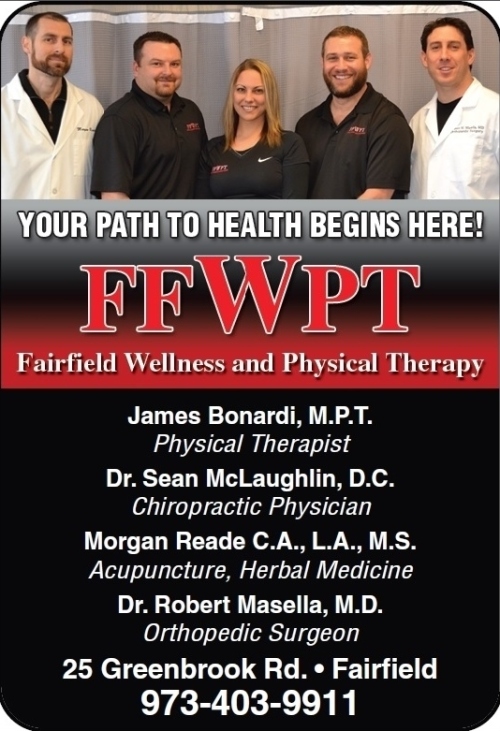

April 21, 2014
Fairfield Wellness and Physical Therapy
Uncategorized
360 Fitness Performance Sports, 360 Fitness Sports Performance, A.R.T., active release technique, acupuncture, Alternative, athlete, best of essex, biofreeze, caldwell, Chiropractic, Chiropractor, DC, Decompression therapy, Diet, Dieting, Dr. Cox, Dr. Oz, Dr. Sean McLaughlin, eating, electrical muscle stimulation, electrolytes, Essex County NJ, Fairfield, Fairfield Wellness and Physical Therapy, fats, FFWPT, FItness, Garrick Cox, Gluten, graston, graston technique, gym, hCG, hCG Diet, Health, healthcare, Human chorionic gonadotropin, hydrate, Jim Bonardi, Juicing, kidneys, kinesio taping, Larry Heisler, laser therapy, M.D., massage, milk, morgan reade, New Jersey, New Jersey Massage, North Caldwell New Jersey, nutrition counseling, oils, organic, orthopedic, orthopedic surgeon, pain reliever, physical therapy, PT, rob masella, Sean McLaughlin, smoothies, spinal decompression, suburban essex, The North Caldwell Wellness Center, urine, veggies, Weight Loss, wellness, wellness center, West Essex High School, www.ffwpt.wordpress.com, www.NJ360Fitness.com
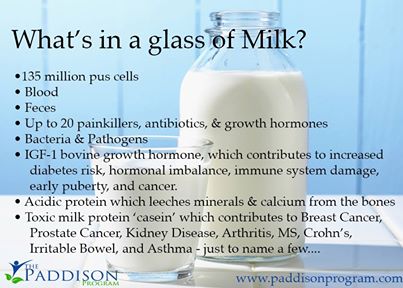
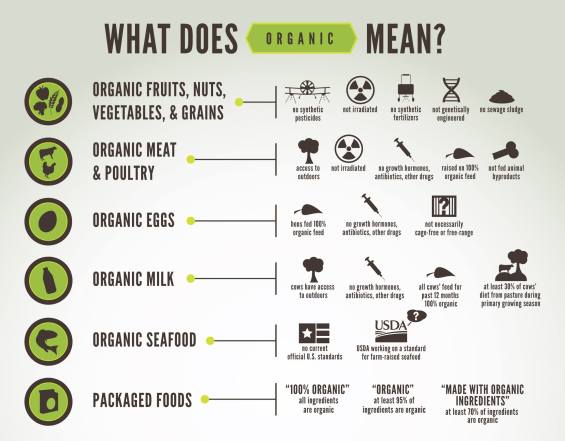
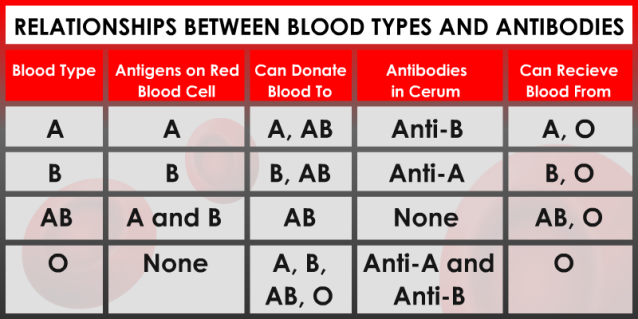
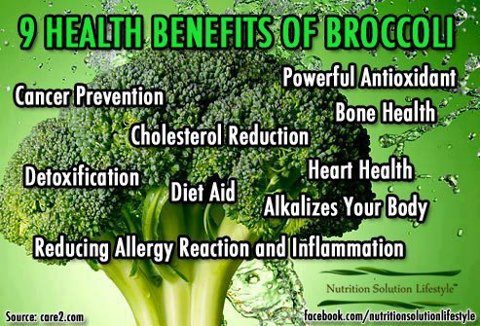
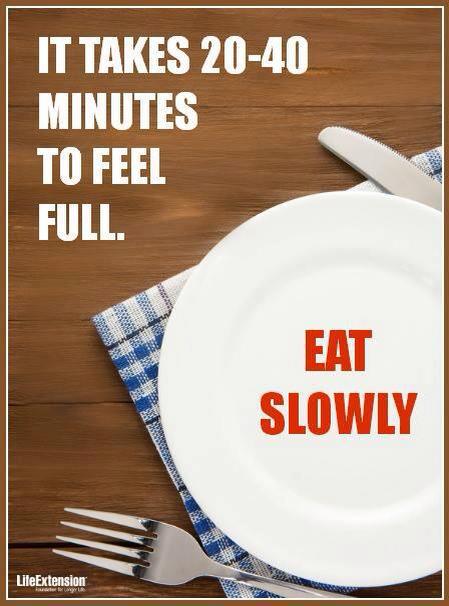
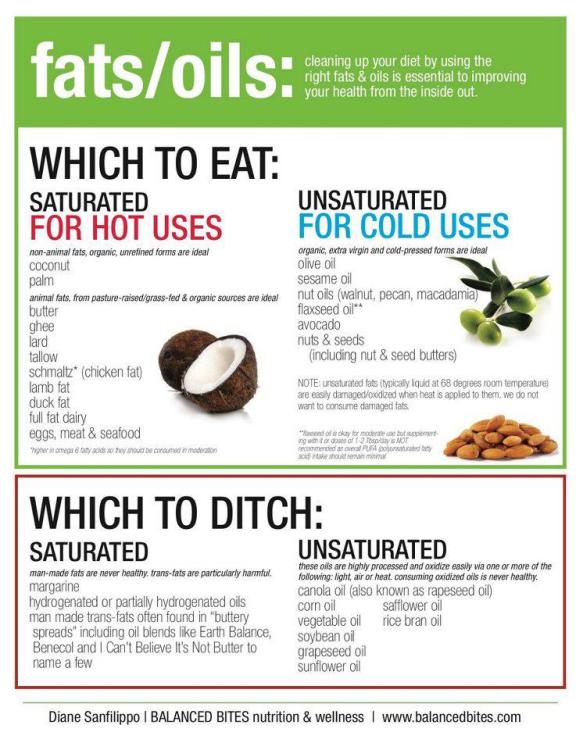
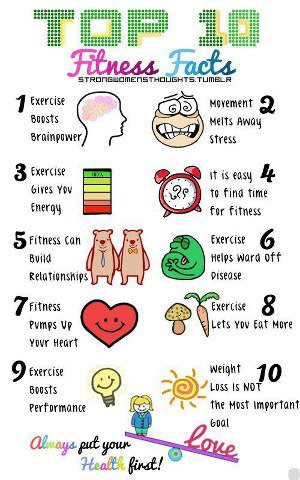
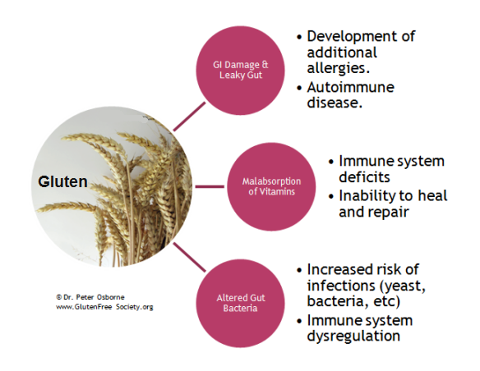
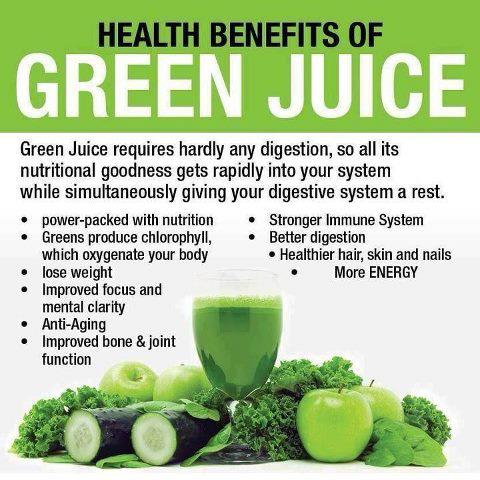
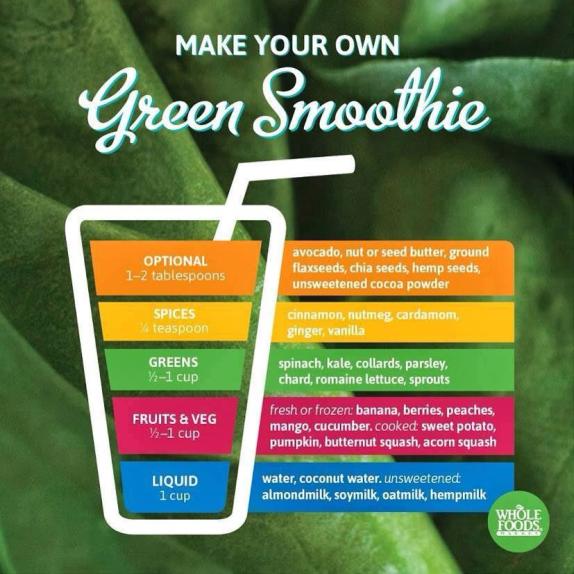

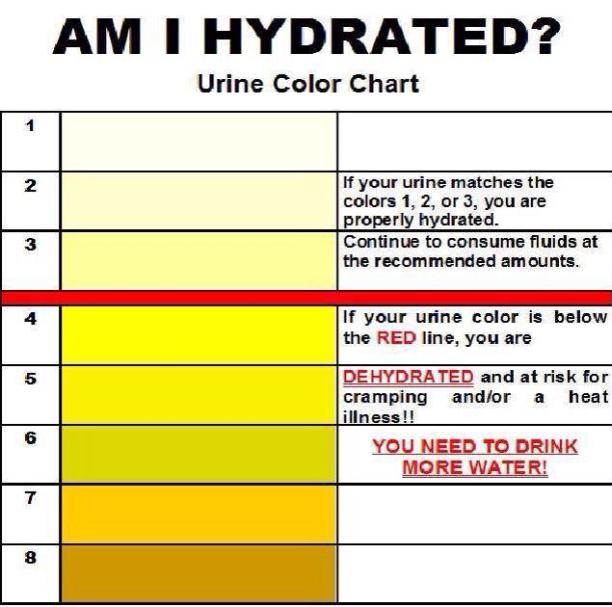
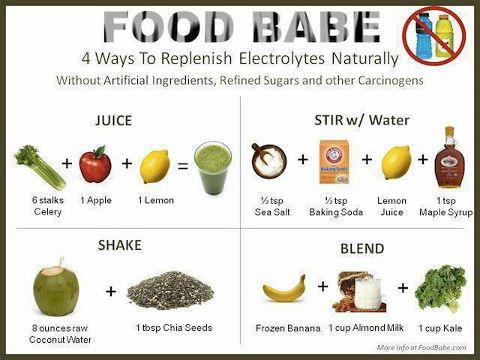
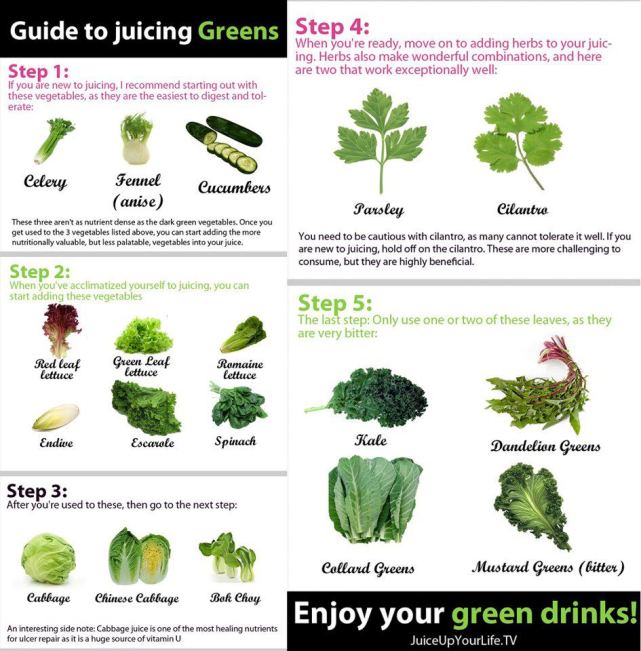
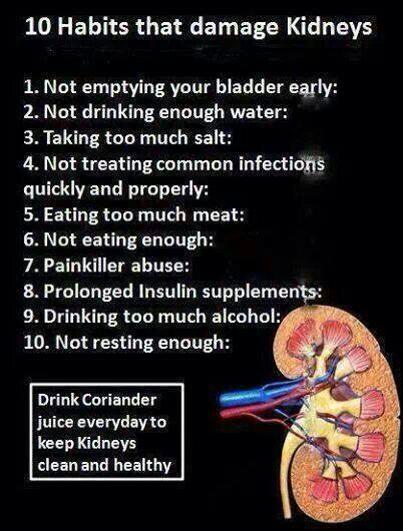
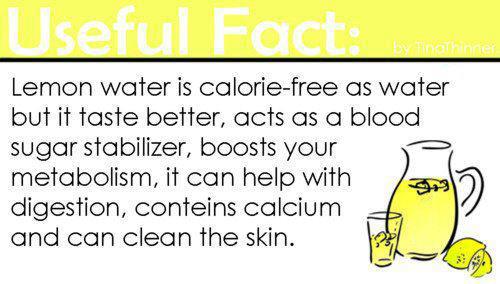
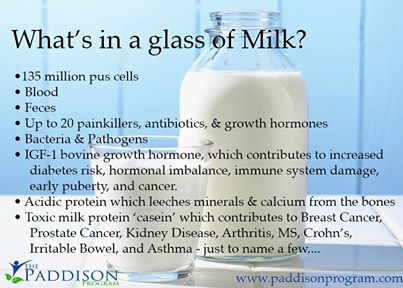
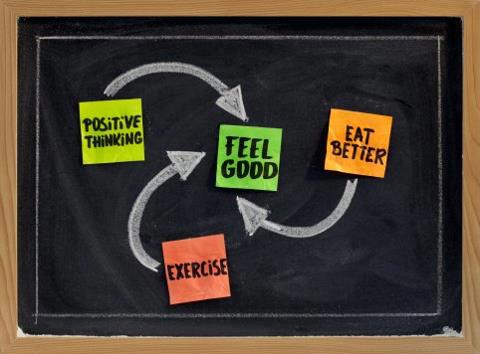
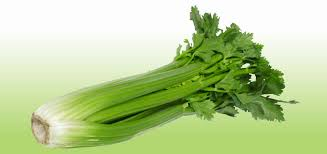
Celery is a strongly alkaline food that helps to counteract acidosis, purify the bloodstream, aid in digestion,
prevent migraines, relax the nerves, reduce blood pressure, and clear up skin problems. Celery contains compounds
called coumarins which are known to enhance the activity of certain white blood cells and support the vascular system.
Celery’s rich organic sodium content has the ability to dislodge calcium deposits from the joints and holds them in
solution until they can be eliminated safely from the kidneys. Celery is a well known natural diuretic and has ample
ability to flush toxins out of the body. Celery also has significant anti-inflammatory properties making it an essential
food for those who suffer from auto-immune illnesses. It also contains significant amounts of calcium and silicon
which can aid in the repair of damaged ligaments and bones. Celery is rich in vitamin A, magnesium, and iron
which all help to nourish the blood and aid those suffering from rheumatism, high blood pressure, arthritis, and anemia.
Fresh celery juice is one of the most powerful and healing juices to drink. Just 16 oz of fresh celery juice a day can
transform your health and digestion in as little as one week.
Older Entries








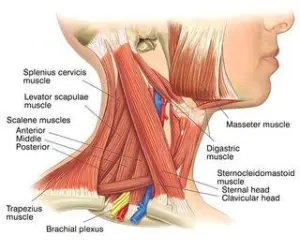
![image[1]](https://thenorthcaldwellwellnesscenter.files.wordpress.com/2014/08/image1.jpeg?w=300&h=195)
![image[2]](https://thenorthcaldwellwellnesscenter.files.wordpress.com/2014/08/image2.jpeg?w=300&h=195)
![image[3]](https://thenorthcaldwellwellnesscenter.files.wordpress.com/2014/08/image3.jpeg?w=249&h=300)
![image[4]](https://thenorthcaldwellwellnesscenter.files.wordpress.com/2014/08/image4.jpeg?w=300&h=225)
![image[5]](https://thenorthcaldwellwellnesscenter.files.wordpress.com/2014/08/image5.jpeg?w=154&h=300)
![image[6]](https://thenorthcaldwellwellnesscenter.files.wordpress.com/2014/08/image6.jpeg?w=267&h=300)
![image[7]](https://thenorthcaldwellwellnesscenter.files.wordpress.com/2014/08/image7.jpeg?w=277&h=300)
![image[8]](https://thenorthcaldwellwellnesscenter.files.wordpress.com/2014/08/image8.jpeg?w=300&h=273)
![image[9]](https://thenorthcaldwellwellnesscenter.files.wordpress.com/2014/08/image9.jpeg?w=300&h=294)






















